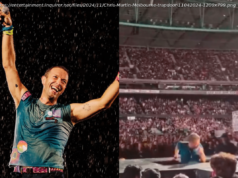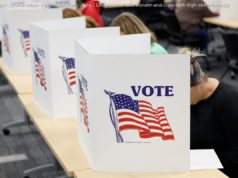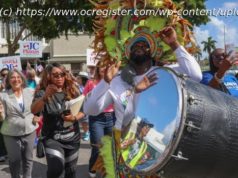The police killing of George Floyd and the ensuing protests, explained.
The police killing of George Floyd and the ensuing protests, explained.
The death of George Floyd, an unarmed 46-year-old black man killed by police during an arrest in Minneapolis, Minnesota, has sparked protests across the country. It has reignited a centuries-long conversation around racism in America and the horrendous ways black people are often treated by police. And it came amid a pandemic that is disproportionately impacting people of color.
On May 25, Floyd, who had recently lost his job as a restaurant bouncer due to coronavirus-related closures, died after being pinned down under a police officer’s knee for several minutes. That officer, Derek Chauvin, ignored Floyd’s pleas of distress as three other officers looked on and bystanders begged Chauvin to remove his knee from Floyd’s neck.
A video taken by a bystander and posted online spread quickly on social media. It shows that by the time Chauvin stopped holding Floyd down, he was silent and motionless. According to a criminal complaint filed against Chauvin, an officer on the scene checked for Floyd’s pulse before Chauvin removed his knee and could not find it. Floyd was later pronounced dead at a local hospital.
Chauvin and the three other officers involved in the incident were fired on Tuesday, May 26, and on Friday, May 29, Chauvin was arrested and charged with third-degree murder and manslaughter. On June 3, Minnesota Attorney General Keith Ellison elevated the charges to second-degree murder and second-degree manslaughter, and the three other officers involved were charged with aiding and abetting murder. Chauvin’s bail has been set at least $1 million.
The incident has rightly prompted outrage across the country, and thousands of protesters have taken to the streets in Minneapolis — and in cities across the country and the world. While many of these protests have been peaceful, some have turned violent, with police clashes, burning buildings, and looting.
The protests have been focused on policing, but come during a 2020 that has been acutely painful for people of color. The coronavirus crisis has disproportionately affected black and Latino Americans, who have become sick and died of Covid-19 at higher rates than whites. The economic turmoil brought on by stay-at-home measures has also hit people of color especially hard — they’ve lost more jobs, and they were less likely to be financially stable in the first place.
Add to that a cascade of headlines of black Americans whose lives have been cut short by white violence and by police in recent weeks — Breonna Taylor, Ahmaud Arbery, and, most recently, Floyd. As Americans were grappling with these tragic headlines, a video went viral of a white woman feigning her life was being threatened by a black man bird-watching in New York’s Central Park after he asked her to leash her dog. It was a reminder that beyond concerns over state violence, systematic racism creates potentially dangerous situations for black Americans doing even the most mundane things.
The protests spawned by the deaths of Floyd and others are hardly a new development in the United States — the deaths of Trayvon Martin, Michael Brown, Sandra Bland, and countless others have led to significant public outcry in recent years. Four years before Floyd’s fatal arrest in Minneapolis, Philando Castile was shot to death during a traffic stop in a nearby Minnesota suburb. Floyd told the officer who kept his knee on his neck, “I can’t breathe,” echoing the words of Eric Garner who died after being held in a chokehold in a police encounter in New York in 2014.
If it feels like we’ve seen this crisis before, it’s because we have. And still so many things haven’t changed.
Floyd grew up in Houston and moved to Minneapolis in 2014 to look for work, according to CBS Minnesota. He got a position as a security guard at a Salvation Army store downtown, and then later began to work two jobs as a truck driver and a bouncer. He had a 6-year-old daughter who still lives in Houston with her mother. In the weeks before his death, he’d been laid off due to Minnesota’s stay-at-home order.
Vox’s Catherine Kim explained the circumstances of his May 25 encounter with police following a purchase at a convenience store and, ultimately, his death, as shown by video footage captured of the incident:
The four officers involved were fired on Tuesday, May 26, and the next day, Mayor Frey called for Chauvin to face criminal charges. Local officials on Thursday said they were investigating Floyd’s death “as expeditiously, as thoroughly, and as completely as justice demands” and asked for patience from the public. At the end of the week, Chauvin was arrested and charged with third-degree murder and manslaughter, and the Justice Department said it would investigate Floyd’s death as well. Chauvin’s wife filed for divorce. The next week, the charges were elevated to second-degree murder.
The day the officers involved were fired, the Police Officers Federation of Minneapolis said in a statement that all video of the incident should be reviewed, and called for waiting on the medical examiner’s report. “Officers’ actions and training protocol will be carefully examined after the officers have provided their statements,” the federation said.
Home
United States
USA — Music George Floyd’s killing has opened the wounds of centuries of American racism






